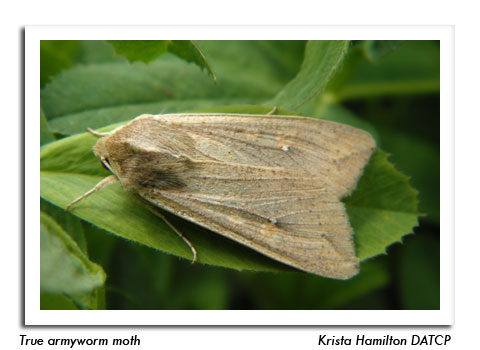
 |
|
|
Looking Ahead
Volume 58 Number 1 Date 05/02/2013 BLACK CUTWORM - The placement of traps was completed by mid-April at 30 locations in the southwest and south-central counties. Seventy-six moths have been reported since the first migrants were registered near Janesville in Rock County on April 15. Reports from other Midwestern states also confirm the start of the long-range, northward migration of moths from the southern U.S. during the week of April 15-22. No significant flights into Wisconsin have occurred as of May 1. EASTERN TENT CATERPILLAR - Overwintered eggs began hatching by April 26 in Grant County, following the accumulation of 50 degree days (base 50°F). The first tents should appear in the next 1-2 weeks on wild cherry, apple, flowering crabapple and other host trees. Control is advised while the larvae and tents are still small. PLUM CURCULIO - The spring migration from wooded areas into orchards may have started during the brief period of warm weather in the past week. Significant activity is unlikely to resume until temperatures increase, but apple growers should set traps in the week ahead and be prepared to check orchard perimeters and early blooming varieties for evidence of this pest. GYPSY MOTH - Larval emergence from overwintered eggs is predicted for May 5-9 in southern Wisconsin. This event occurred by April 2 last year, April 26 in 2011, and is about two weeks later than normal this season. Aerial spraying directed against the first and second instar stages in the gypsy moth life cycle could be delayed until the week of May 24-27, which would be one of the latest start dates in the 34-year history of the Wisconsin Gypsy Moth Program. TRUE ARMYWORM - The first moths of the season were collected near Janesville in the last week. Minimal activity was reported, with only five adults appearing in the black light trap from April 29-May 1. Similar to the black cutworm, the principal factor influencing true armyworm populations at this time of year is the frequency of southerly storm events that carry migrants into the state. The recent counts from Janesville suggest a minor flight has occurred. -- Krista Hamilton, DATCP Entomologist 



|
|
|